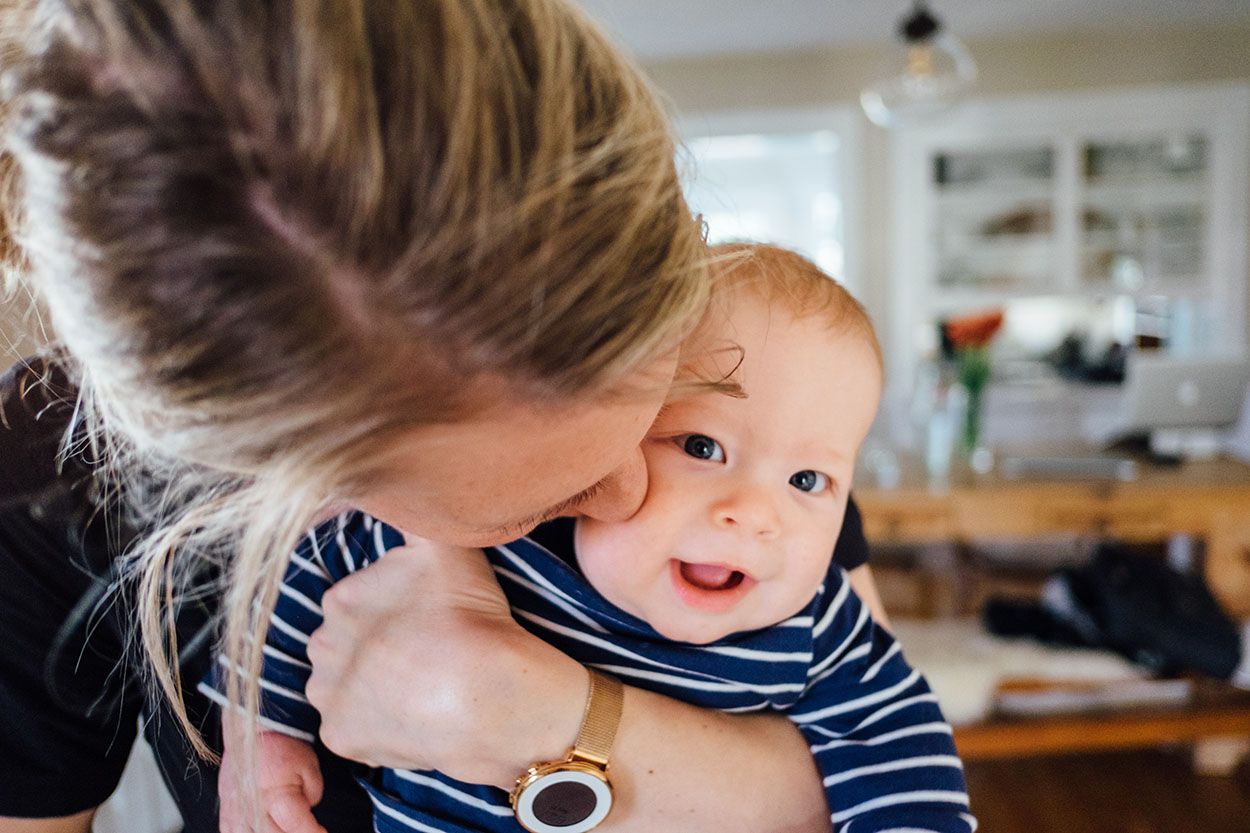Sometimes, it seems as though parents are stuck between a rock and a hard place.
Do parents go back to work and spend a large percentage of their wage on childcare, or do they sacrifice their income and carry out the full-time care themselves?
It can be difficult to know what to do for the best, both financially and in terms of bringing up your family the way that you’d like.
It’s well worth checking out the Gov.uk website’s Childcare Calculator to check if there are any discounts or schemes that may be available to you to help ease the costs.
Before you use the calculator, you’ll need the following information to hand:
- Your income;
- Your working hours;
- If you have a partner, their income and working hours;
- The date of birth of your child;
- Any disability benefits your child is currently in receipt of;
- An estimation of your weekly or monthly approved childcare costs.
Financial help for the costs of childcare
1. Tax-Free Childcare Scheme
What is the Tax-Free Childcare scheme?
Tax-Free Childcare is a government-run scheme, which pays 20% contributions towards your childcare costs, up to £2,000 per year. The government will add 20p for every 80p you pay into your Tax-Free Childcare account.
Childcare costs include childminders and nurseries, as well as some holiday clubs. All childcare providers must be approved by the scheme. You can search for approved childcare providers here.
Who is eligible for Tax-Free Childcare?
Eligibility for the Tax-Free Childcare scheme depends on various factors, including your income, immigration status, and your child’s age and circumstances.
While there may be some restrictions, generally you must:
- Be a parent of a child under the age of 12 (or 17, if the child is disabled);
- Be in employment and working – this includes being self-employed. If you have a partner, they must also be working;
- Be expected to earn £2,539 before tax over the next three months if you’re aged 21 and over; £2,080 if you’re aged between 18 and 20; and £1,570.40 if you’re under 18 or an apprentice.
- Not be in receipt of support through Tax Credits or Universal Credit.
You may still be eligible for Tax-Free Childcare if you, or your partner if you have one, are:
- On sick leave;
- On annual leave;
- On maternity, paternity, or shared parental leave, but due to go back to work within 31 days of your application date; or
- Unable to work due to a disability, or because you care for a disabled person.
For full eligibility information, please head over to the Gov.uk website .
How much money could I get?
You may be able to get up to £500 every three months (up to £2,000 a year) for each of your children. If your child is disabled, you may be able to get £1,000 every three months (up to £4,000 a year).
How does it work?
You can apply for Tax-Free Childcare and set up an account on the Gov.uk website. Once your account is active, you can make either regular or one-off payments, and can withdraw money to pay for approved providers whenever you choose.
It is estimated that approximately 800,000 of the 1.3 million eligible households are not making the most of Tax-Free Childcare. Being approved could help save you money on childcare costs, so it’s well worth checking your eligibility.
Good to know: you will need to re-confirm your details every three months in order to continue receiving Tax-Free Childcare payments. A reminder will be sent to you in advance to help you keep track.

2. 30 hours free childcare scheme
What is the 30 hours free childcare scheme?
During term time (38 weeks per year), those who are eligible may be entitled to receive up to 30 hours free childcare a week. Annually, this equals a maximum of 1,140 hours free childcare.
If you use less than 30 hours per week, it might be possible for you to get more than 38 hours a week.
You can use your 30 free hours to cover a range of providers, including nurseries and childminders. All providers mustbe approved by the scheme – you can find a list of such providers through Ofsted’s website, or on this list of childminder agencies.
Who is eligible for 30 hours free childcare?
You may be eligible for 30 hours free childcare if:
- You live in England;
- You are employed; and
- Your child is between 9 months and 4 years old, and not in school. When your child reaches compulsory school age or starts reception class, they will no longer qualify for the scheme.
You cannot claim 30 hours free childcare if your child does not usually live with you.
Other factors may affect your eligibility, including your income and immigration status.
How does it work?
If you are eligible and your claim is approved, you will be sent a voucher, which you should give to your chosen, approved childcare provider.
How can I apply for 30 hours free childcare?
You can apply online and your eligibility will be confirmed straight away, although you may have to wait up to 7 days for your code to be sent. Childcare providers will request to see your code, along with your National Insurance number and proof of your child’s date of birth.
A valid code is needed by the end of the month before the start of a new term.
To ensure that you receive your code in time, the websites recommends the following application timeframes:
| When does your child turn 9 months old? | They can receive 30 hours free childcare from: | The application deadline is: |
|---|---|---|
| Between 1st September and 31st December | 1st January | 31st December |
| Between 1st January and 31st March | 1st April | 31st March |
| Between 1st April and 31st August | 1st September | 31st August |
You can apply for 30 hours of free childcare as soon as your child turns 23 weeks old. The above timescales differ if you’re returning to work after maternity, paternity, shared parental or adoption leave, or when starting a new job.
Applying outside of these timeframes may result in a delay to the issuing of your code.
To continue receiving your 30 hours free childcare, you will be asked to reconfirm your eligibility every three months, or your code will expire.

3. 15 hours free childcare
ALL children aged between 3 and 4 are entitled to 570 hours free childcare per year, which is normally taken as 15 hours per week, over 38 weeks.
Childcare must be given through an approved provider.
You do not need to apply for 15 hours free childcare. Instead, you must present your care provider with proof of your child’s age, which will enable them to apply on your behalf.
Further information can be found through your local council.
4. Universal Credit
If you are in receipt of Universal Credit, you may be able to claim back up to 85% of your childcare costs. The maximum you might be able to get back per month is £1,031.88 for one child, and £1,768.94 for two or more children.
If you live with your partner, you will both need to be either:
- Working (regardless of how many hours); or
- Have a job offer;
You can check your eligibility for Universal Credit here.
If you receive Universal Credit and qualify for help towards childcare costs, the money will be sent to you in arrears, after you have paid your childcare provider.
It’s important that you maintain evidence of how much money you have paid your childcare provider, as this will need to be reported every assessment period, which usually takes place once a month.
5. Local authority free holiday clubs
The Holiday Activities and Food programme (HAF) was launched by the government in October 2021. School-aged children from Reception to Year 11 who receive benefits-related free school meals are entitled to use the programme, which runs through the Easter, summer and Christmas holidays.
The HAF programme aims to provide children with healthy and nutritious meals, exercise, engaging activities, and socialisation during the school break. The expectation is that authorities should offer a minimum of four hours per day, four days a week, although this may vary.
If you are eligible for the HAF programme, you should receive a letter in the post, offering your child a free place. You will need to contact the HAF programme via the details provided on your letter to confirm your child’s place and choose the club you wish for them to attend.

Should I continue to work, or should I consider being a stay-at-home parent?
Everyone is different, as are their situations, and ultimately you have to do what’s right for your family.
If you’re spending a large amount of your income on childcare but leaving your job is not an option, then there may be other ways you could cover the cost. For example, could you ask your boss for a pay-rise to boost your income and help take the sting out of childcare costs, or is it possible to request flexible working hours to reduce the time your child spends in nursery? Of course, it’s good to fully consider the implications of working from home with a child in tow, especially if you’re on and off Zoom calls all day.
It may be of some comfort to remember that the decisions you make may be reversible. You might take on the role of a full-time parent for six months and realise that it’s not for you. That’s totally fine!
Or, spending more time with your family and saving money on childcare might be the best thing you’ve ever done.
I’ve decided to become a stay-at-home parent. Is there any financial help available?
If you’ve decided to take the leap and leave your job, you may be wondering if there is any additional financial support to help you adjust to your new situation.
You can find free, impartial advice on sites such as StepChange, National Debtline, MoneyHelper and Citizens Advice.
You might find it helpful to take a look at the work of Home-Start UK, who are a charity specialising in help for families with children under five years of age who may be struggling with various hardships such as isolation, bereavement, and money worries. You can find out more about Home-Start UK on their website.

